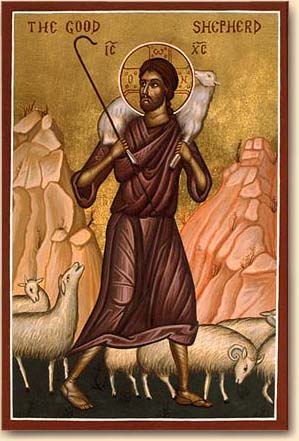

This is done by means of two things, a prepared environment, and a
trained catechist whose sources are Scripture and Liturgy. The prepared
environment contains materials that are models of things used in the
Church's worship such as altar, Eucharist, baptism, liturgical colors,
etc. The environment also contains materials relating to the
proclamation of the faith such as parables, prophecies, geography of
Israel, and the life of Christ. These are manipulatives for use by both
the catechist and the child. The trained catechist makes presentations
to the child using the materials. These presentations are chosen to
convey the essentials of the faith in a manner appropriate to the
child's development. The child is then invited to internalize and
respond to the presentation by working with the materials
themselves. The catechist does not give answers or impart
information. The catechist presents the reality, and asks questions. The
catechist assists in the child's own discovery of the meaning. The motto
of CGS is "Help me fall in love with God by myself." CGS is divided into three levels. Level 1 is age 3-6, Level 2 is age
6-9, and Level 3 is age 9-12. In Level 1 the controlling image is Christ
the Good Shepherd who loves his sheep and gives everything he is for
them. The Good Shepherd knows his sheep and calls them by their
name. The child comes to discover who the Shepherd is and who the sheep
are. What stands behind all this is the first moment of the covenant,
the moment of gift. Level 1 stays focused on the moment of gift with
the aim of children coming to a deep enjoyment of it. The enjoyment of
the gift of God's own self to the child is the foundation of further
religious insight and moral development. Level 2 continues the reflection on the moment of gift and begins to
awaken in the child the question of their personal response. The
controlling image is Christ the True Vine, and the History of the
Kingdom of God. The child begins to discover the vast cosmic history of
God's plan of salvation and that they have something to contribute to
it. Moral sensitivity/awareness begins here and grows with the
presentations of Jesus' Maxims, Moral Parables, and Reconciliation. The
child's desire to carry out the requests of the Good Shepherd naturally
flow from the relationship of loving trust that was established in the
previous level. Level 3 carries the human response further. The controlling image is
the Plan of God as worked out in the Bible and human history. The child
begins to deal with the advance of the Kingdom and people's opposition
to it. The paradigm of Creation-Redemption-Parousia guides a more
thorough exploration of Scripture, particularly the Old Testament. Throughout all three levels, the child encounters the essentials of
the Faith. All three levels include presentations on the Sacraments, the
Bible, Geography, Infancy and Passion Narratives, Prophecies, Parables,
Maxims in a manner developmentally appropriate. The presentations
increase in detail and sophistication as the child matures. However, the
role of the catechist as facilitator of the child's own discovery of the
meaning of these things for themselves remains throughout. Both the
child and the catechist find their faith nourished in this process. An interpersonal relationship is always a mystery, and all the more
so when that relationship is between God and the Child. We believe that
there is a deep bond between God and the child which produces in the
child the desire to draw near to God. The catechist's role is to prepare
the environment and to make presentations that "call forth"
the child's response rather than "pour in" information. They
listen with the child and together ask, "God, who are you? How do
you love us?" The adult is a co-wonderer with the child as they
together enjoy meditating on the questions generated by the Scriptures
with the prepared environment as a developmental aid. In the words of Dr. Sofia Cavaletti, who developed the program,What is the
Catechesis of the Good Shepherd?
An introduction by the Rev. Robert J. Gaestel.
The Catechesis of the Good Shepherd is a new way of Christian education
that presents the most important realities of the Christian faith to the
youngest members of the Church. This manner of Christian education
assumes that young children have religious potential. That is, since God
is already present to them in their deepest being, they are capable of
developing both a conscious and intimate relationship with God. They
only need the guidance and vocabulary to enable them to become aware of
their relationship with God and give expression to it.
"If we want to help the child draw nearer to God, we should with
patience and courage seek to go always closer to the vital nucleus of
things. This requires study and prayer. The children themselves will be
our teachers if we know how to observe them."
A Catechesis of the Good Shepherd Web Site.
